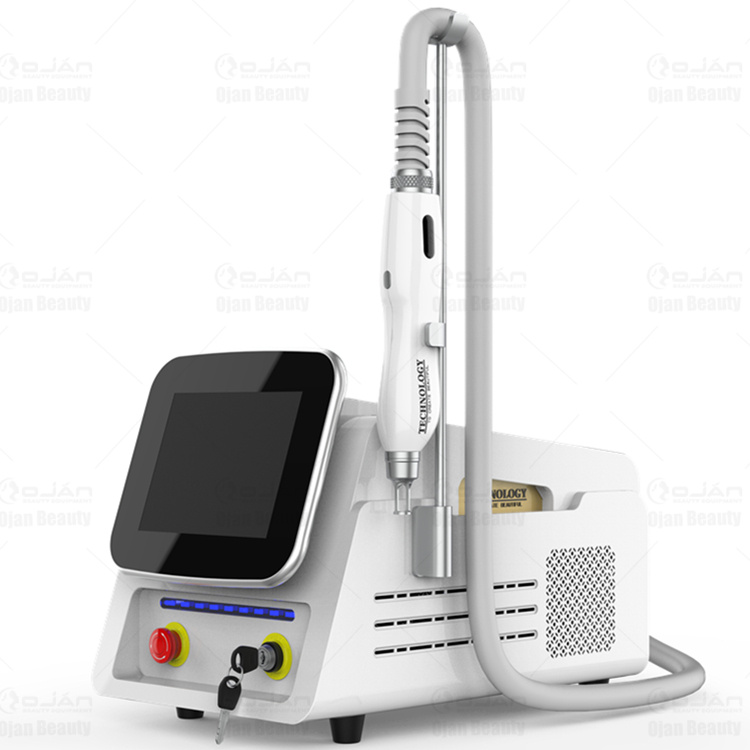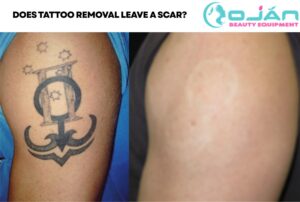
Does Tattoo Removal Leave A Scar? A Professional Guide
Understanding Does tattoo removal leave a scar and how the removal process works, the potential risks, and the best aftercare practices can help minimize the chances of scarring. This article explores the science behind tattoo removal, its impact on the skin, and practical ways to ensure a safe and effective healing process without permanent marks.
Table of Contents
ToggleDoes Tattoo Removal Leave A Scar? Overview

Laser tattoo removal is a very popular cosmetic procedure used by people to remove unwanted ink from their skin. Some get the tattoos removed because it is a personal decision; others get it done because it might interfere with a job or because they just don’t like it. One of the most asked questions, however, is, “Will I get a scar from this tattoo removal?” The idea of scarring with this procedure is very much on the minds of people thinking about it. Although laser technologies and techniques have moved to their next level, scarring may still depend on other factors concerning the skin that might react to such treatments.
How Does Laser Tattoo Removal Work?

Laser tattoo removal is the most effective and widely used tattoo removal method. The high-intensity laser beams penetrate the target area, breaking up ink particles in the skin, which later can be absorbed and eliminated through the human immune system over time.
Different wavelengths of lasers effectively remove target inks according to the particular color, ensuring that the surrounding tissue is not damaged. The number of sittings needed is highly variable and depends on the size, color, and depth of the tattoo and the skin type. Generally, there are several weeks between sessions as the body needs time to break down the ink.
Although laser removal is safe, there can be red blotches or swellings or sometimes even blisters. Healing responses of the body might favor or against the imprints of scar formation post-treatment. An effective aftercare regime significantly reduces scar development and seals the skin healing outcome.
Does Laser Tattoo Removal Cause Scarring?
One of the most common concerns people have when considering laser tattoo removal is, “Does tattoo removal leave a scar?” The answer largely depends on multiple factors, including skin type, aftercare practices, and the expertise of the technician performing the procedure.
With regards to the above things, laser treatment, when done by an expert with a high-grade laser, does leave a mark on the skin for permanent scarring. The laser targets only the pigment within the skin without damaging surrounding tissue. However, mismanagement of aftercare, picking at scabs, and underlying skin conditions play a big part in the probability of scarring.
Older methods of tattoo removal like dermabrasion and excision have a higher propensity of leaving scars as compared to modern laser treatments. This is why it is very important to go to a well-reputed clinic and also post-treatment advice, so the best results can be obtained.
Factors That May Lead to Scarring
While laser tattoo removal is generally safe, certain factors can contribute to scarring. Understanding these risks can help individuals take preventive measures to protect their skin.
- Skin Type and Sensitivity: People with sensitive or darker skin tones may be more prone to pigmentation changes or scarring after laser treatment.
- Tattoo Characteristics: The age, color, depth, and size of the tattoo affect how easily it can be removed. Darker inks and older tattoos often respond better to laser treatment.
- Type of Laser Used: Advanced Q-switched lasers are less likely to cause damage compared to older models.
- Technician’s Experience: An experienced professional knows how to adjust the laser settings according to the individual’s skin type and tattoo characteristics, reducing the risk of burns or scars.
- Pre-Existing Skin Conditions: People with a history of keloids or other scarring disorders may be at a higher risk of developing scars after treatment.
How to Prevent Scarring After Tattoo Removal
Proper care before and after tattoo removal significantly reduces the chances of scarring. Following the recommended guidelines ensures that the skin heals correctly and remains smooth.
Pre-Treatment Care
Preparing the skin before tattoo removal helps improve the effectiveness of the procedure while reducing potential risks.
- Choose a licensed and experienced technician who specializes in laser tattoo removal.
- Avoid excessive sun exposure or tanning before the procedure.
- Keep the skin moisturized and hydrated for better healing.
- Follow any specific pre-treatment instructions provided by the specialist.
Post-Treatment Aftercare Tips
The aftercare routine plays a crucial role in minimizing complications such as infection and scarring.
- Keep the treated area clean and avoid touching it unnecessarily.
- Apply antibiotic ointment as recommended by the specialist.
- Avoid direct sunlight and always apply sunscreen to prevent hyperpigmentation.
- Do not pick at scabs or blisters, as this can lead to permanent scars.
- Stay hydrated and maintain a healthy diet to support the body’s natural healing process.
By following these steps, most people can undergo laser tattoo removal without worrying about noticeable scarring.
What to Do If Scarring Occurs?
Despite taking precautions, some individuals may develop scars after tattoo removal. If this happens, several treatment options can help minimize their appearance.
- Scar Creams and Ointments: Over-the-counter creams containing ingredients like silicone or vitamin E can help fade minor scars.
- Laser Resurfacing: A different type of laser treatment can be used to smooth out scar tissue and improve skin texture.
- Microneedling: This technique stimulates collagen production, reducing the appearance of scars.
- Chemical Peels: Exfoliating treatments can improve skin tone and texture over time.
- Consulting a Dermatologist: For severe scarring, professional treatment from a dermatologist may be necessary.
If scarring occurs, early intervention can prevent it from becoming permanent and restore the skin’s natural appearance.
Alternative Tattoo Removal Methods and Their Risks
Besides laser tattoo removal, other methods exist, but they come with varying risks of scarring.
- Surgical Excision: This involves cutting out the tattooed skin and stitching the wound. While effective, it almost always results in a scar.
- Dermabrasion: A sanding technique that removes layers of skin but has a high risk of scarring.
- Chemical Peels: Acid-based treatments that break down tattoo ink but can cause skin irritation and discoloration.
Compared to these methods, laser tattoo removal remains the safest and most effective option with the least risk of scarring.
Related Blog – How Many Sessions of Laser Tattoo Removal?
Final Thoughts
The question “Does tattoo removal leave a scar?” depends on several factors, including the technique used, skin type, and post-treatment care. While modern laser tattoo removal significantly reduces the risk of permanent scarring, following proper aftercare is essential for optimal healing.
Find the right technician for you; guard the treated area conscientiously as instructed, and a smooth recovery will surely follow. Most tattoo removal cases can be successfully dealt with; even scar formation is not an issue. Scarring, if it occurs, can be treated to improve the look of the skin and regain the confidence of the affected person.
Ultimately, tattoo removal candidates should carry out their research and seek consultation from their professionals before adhering to best practices toward their desired outcomes.
